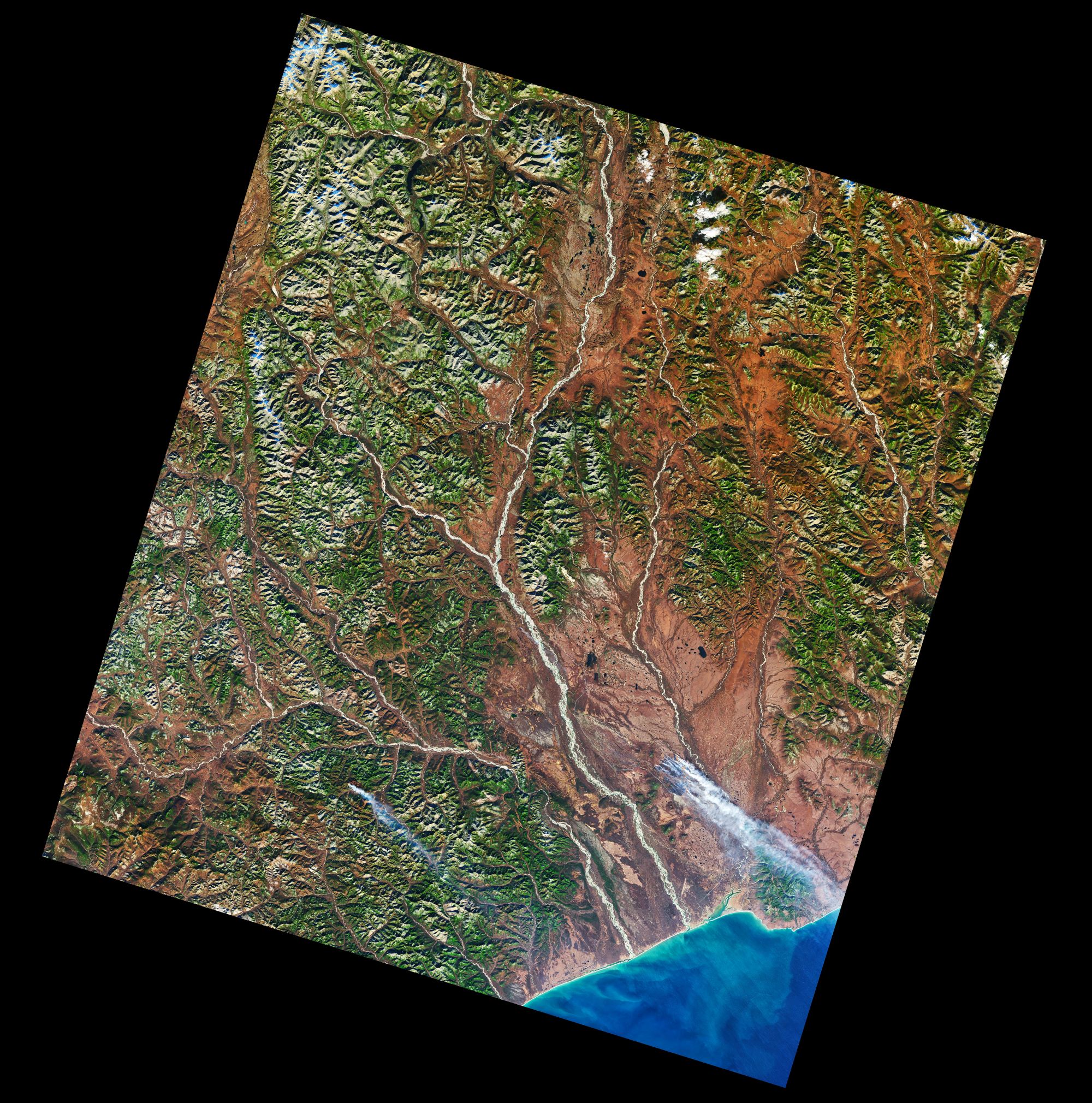[:ja]NASAの地球観測衛星Landsat 8が撮影したロシア、極東のオホーツクおよびジュグジュル山脈が冬を迎えつつある様子です。

画像からもわかりますが、冬が近づき、極東シベリアのジュグジュル山脈が降雪で白くなり始めています。10月のこの時期、一帯の日照時間は10時間程度ですが、落葉とともに茶色になっていきます。ジュグジュル山脈は、ロシアの極東連邦管区・ハバロフスク地方にある山脈で、オホーツク海北西岸に連なります。また、オホーツクは、オホーツク海に面したロシアのハバロフスク地方に属する人口5千人程度の港町(都市型集落)です。オホータ川やオホーツク海の名称の由来である “Охота” (Okhota) とは、「狩猟」(英: hunting)を意味しています。
地上の様子はこちらです。

参考文献: Winter is Coming (NASA Earth Observatory)
地球俯瞰画像を見る: LiVEARTH
[Earthview Wonders] No.1406: Winter in Siberia🇷🇺
NASA’s Landsat 8 satellite captured Okhotsk and Dzhugdzhur Mountains of Russia facing upcoming winter.

As can be seen in the image, chilly autumn and winter weather has begun to leave snowy mark on the Dzhugdzhur Mountains, Russia’s Far East. Valleys in the area become more muted and brown by October with 10 hours of daylight, as leaves withered and dropped. The Dzhugdzhur Mountains (Jugjur Mountains) are quite deserted, the one exception being the gold mines that have operated in the range since the 1920s. To the east the range is bound by the northwest coast of the Sea of Okhotsk.
The local scenery on the ground is as follows.

Reference: Winter is Coming (NASA Earth Observatory)
See earthview photo gallery: LiVEARTH[:]